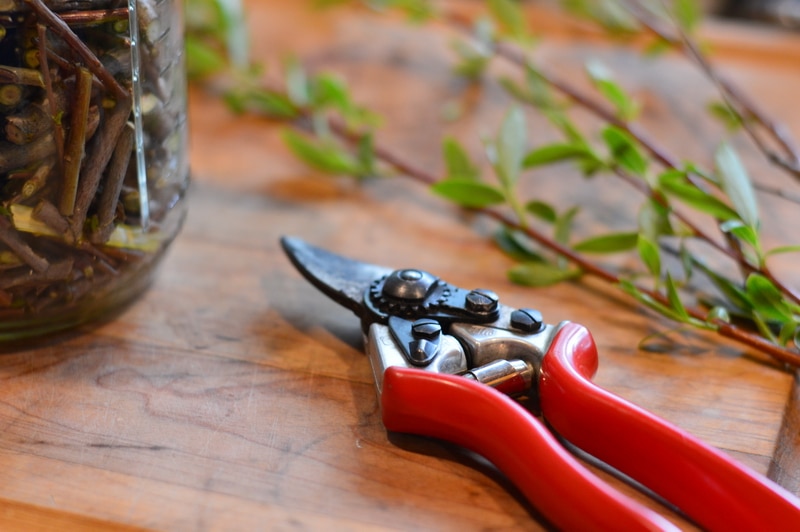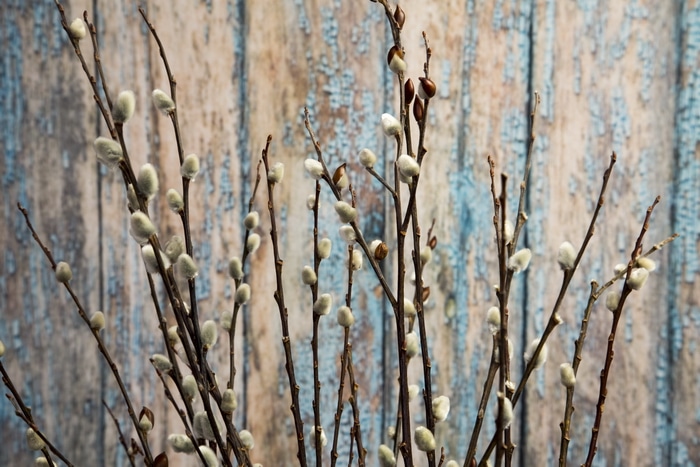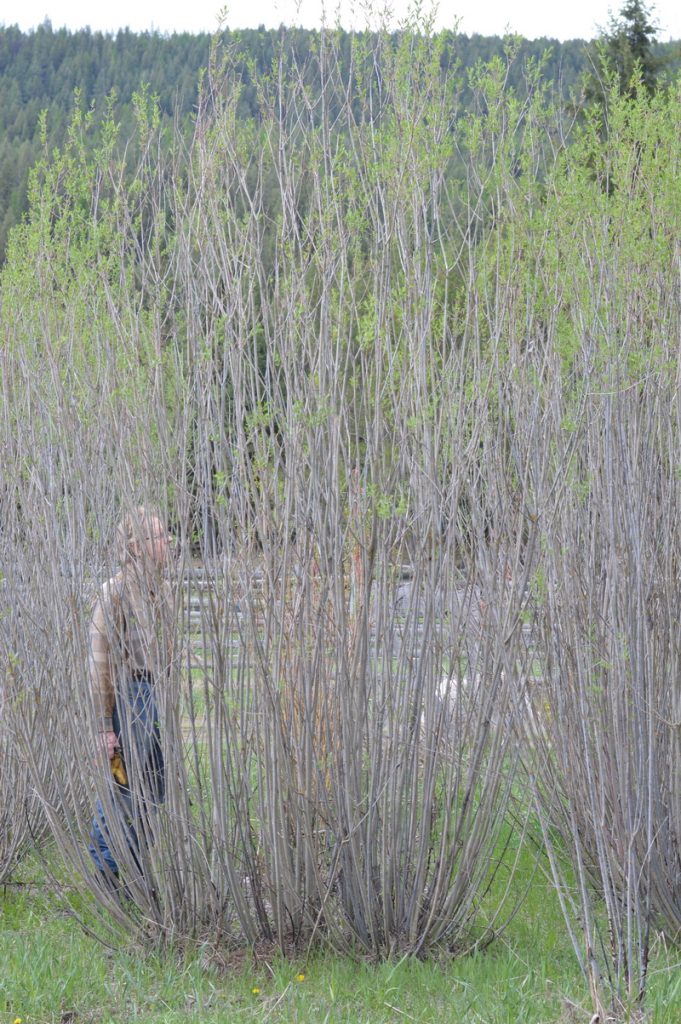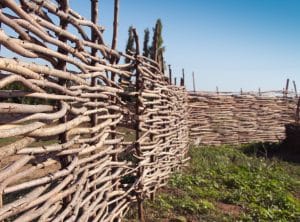10 Reasons to Grow Basket Willows on Your Homestead
Willows are one of the easiest plants to grow and have so many beneficial uses including but not limited to medicinal, structural and soil purification. Learn why and how you should grow basket willow on your homestead.

Willows are one of the easiest plants to grow on your homestead. If you have space away from septic drainage fields and building foundations then you really should consider planting a few willow sticks.
1. Willows are carbon sequesters.
Willows are fast-growing trees from the poplar family. They absorb carbon from the air into their leaves and then store the carbon in their root zones. Even when willows are burned for fuel, the amount of carbon that they release is less than what they take in during the growing season. This makes them the ideal plant to grow as a break between your organic garden and the road. In fact, in some cities, basket willow varieties are being used as a buffer between highways and residential areas, to reduce both air pollution and noise pollution.
2. Willows help to filter toxic waste and purify the soil.
Willows are also grown in areas where the soil is polluted from toxic waste spills or where gasoline is being off-gassed into neighbouring properties or water tables. Willows help to purify the soil. (don’t use the bark of these trees for medicinal purposes, though).
3. Basket willows are fast-growing.
Basket willows are special species of willow that have been grown for centuries specifically for basket weaving and farm use. The stems are flexible and can be bent at a 90-degree angle without breaking when they are green. They grow straight, without branching in their first-year growth. Basket willows will grow 4 to 8 feet per year when coppiced annually in the Spring.
4. Basket Willows is a versatile resource.
Basket willows that are coppiced annually grow many straight rods that can be used for basket weaving. Need a laundry basket, an egg basket, a bread basket — you can grow your own with willows and get the plastics out of your lifestyle. Leave the willows to grow for two or three years and you will have 10 or 12 foot long, straight poles about 2 to 3 inches thick for willow furniture making, garden trellises, or even garden arbours. Cut them back and you can grow the same straight poles again, from the same plot. Willows don’t need fertilization and after the plot is established they don’t need water. (Water and weed well the first two years to get the plot established.)
Farmers in Europe used to pollard their willows and allow the straight shoots to grow for a few years. Then harvest them for fence posts or fuel logs. Coal-powered electrical generation plants are using the fast-growing qualities of willow to grow renewable fuel logs that will co-power with coal, reducing the reliance on nonrenewable resources.
5. Willow bark can be harvested for herbal medicine.
Willow bark is anti-inflammatory. It takes away fever. It reduces pain. It has been used for centuries to reduce flu and cold symptoms. Strip the bark from organically grown willow in the Spring just as the sap begins to flow. To use it make a decoction of the inner bark of the willow. If you didn’t harvest it in Spring but need some in an emergency, simply take branches from an established willow, peel the bark and scrape the inner bark with a knife.
6. Willow branches can be used as a natural rooting hormone.
Let willows help you root your cuttings. Take willow branches and cut them with pruning shears into one-inch pieces. Drop into the water that you are using to root soft plant cuttings. The willow encourages root development. See a more in-depth tutorial on how to use willow as a natural rooting hormone, in my post on the Attainable Sustainable blog.

7. Willows are super easy to grow.
This same trait for rooting works to make the willow easy to grow. You will notice if you use the straight branches of basket willows to create garden trellises that the willows will root and form a living trellis. If you take any willow branch that is at least 10 inches long and push it into prepared soil to at least half its depth, right side up, it will root and send up side shoots. The next spring cut this down to 4 inches above the ground and you will establish a willow stool — continue to cut the new growth at the stem or stool every spring and you will establish a coppiced willow stool that will give you many years of willow rods for weaving. If you allow just one strong rod to grow and become established, cutting back all other shoots, you will establish a specimen tree.
If you want to create a pollard tree, allow a specimen tree to grow for 3 or 4 years and then cut it off at a height of 5 or 6 feet. It will send up rods from the cut. Harvest these annually for baskets or every 3 to 5 years for poles.
For the first two years, your willow bed should be kept weed-free and well-watered. After two years the leaves from the willows will provide enough mulch and fertilization that the weeds will be under control. Weeding is important though to get the bed established.
Many basket willows will grow in zone 5 and up. A few will grow in climates as harsh as zone 3. Check out my willow page for information about specific species of basket willows.
8. Willows make an attractive organic screen.
Have an area that you want to mask from public view? Need a barrier between your backyard patio and the alley traffic or your neighbour’s backyard? Willows are fast-growing and can be managed as a close hedge, to block the view and provide a windbreak and shelter for birds, and beneficial insects.

9. Willows provide early pollen for bees before other flowers are open.
Willows, when allowed to open their pussy willows, rather than being coppiced annually, provide early pollen for bees. If you have your own bees, you need willows in a hedge to grow close to them for early spring feeding. If you have an orchard, supplementing the blossoms with early willow pollen will encourage the bees to come to your orchard.
10. There are enough varieties of basket willow to offer colour and interest to your garden in all seasons.
Many of the willow varieties offer bright red, orange, yellow, and purple stems to contrast with the white snow all winter. In summer the leaves are different shapes and sizes and contrast well with other garden plants. Basket willows and decorative willows can be grown side by side in the same garden.
Some cautions when planting Willows on your Homestead:
Choose an area away from building foundations and Septic drainage fields. Willow roots seek out water and if the trees are not coppiced, their roots will extend to the same radius around the tree underground, as the branches extend out, above the ground. The roots can be kept in check by coppicing the tree. And so if you will coppice the tree annually, you will not need to concern yourself much with invasive roots. But if you are growing willow as a specimen tree, consider where the roots will grow.
To plant willows:
Prepare the ground ahead of time by removing weeds. Put down a weed-blocking fabric to help manage weeds, if desired.
Push willow stems, 10 to 12 inch stems of green willow, into the ground, buds pointing up. Firm the soil well around the rod to ensure contact with the soil. Water well. Apply a mulch to conserve water and reduce the breakdown of the weed blocking fabric. Roots will be established and the shoot begins to appear within a month of planting.
Resources to help you grow a basket:
Cane, Rush and Willow: Weaving with Natural Materials
The following book – Willow Basketry – is a classic that is no longer in print. Its available used from Amazon for a very reasonable price right now. Get it while you still can. It’s published by Interweave Press and is a textbook for serious willow basket weavers and beginners. Last year this book was over $100 used. I highly recommend it.
Willow Basketry
Weavers Of Tradition And Beauty: Basketmakers Of The Great Basin
Basic Basket Making: All the Skills and Tools You Need to Get Started (How To Basics)
Natural Baskets
Commonwealth Basket Basketry Tool Kit
Back to you:
Have you tried any of these willow uses? Which ones worked for you?






But how to get willows established before the deer eat them??? They are deer candy here. I really appreciate your article, though! Thanks for the information.
Salix purpurea varieties are bitter tasting and deer seem to leave them alone. No guarantees, though.
Thanks for this. Im still confused on what willow to use. I have a weeping willow should I just use those sticks?
Its better to use a willow with stiff branches, with no forking in the branches.
Who is the author of Willow Basketry? I have found several books with this title and I am unsure which one to purchase.
This is the textbook that I was referring to: https://amzn.to/2F3Y7g7 by Bernard Verdet-Fierz and Regula Verdet-Fierz, published by Interweave Press, 1994.
I made a hurdle (which is like a portable piece of fence) out of wild-growing willow in Taos County, New Mexico. The hurdle, being my first, was funky, but real strong.
The Native Americans of Taos Pueblo call themselves the People of the Red Willow.
I didn’t know that. Thanks for sharing that information.
I want a link to buy some willow stems and/or plants but do not see a link on your website. Can you help?
What are the best varieties for live fencing/building? And for baskets? Also, do you know of any source for growth rates?
Thanks!
Hi, I’ve planted some willows in my garden a few years ago and coppiced them, hoping to use them in some simple basketry. They are fine and healthy and I cut them down each winter and in the spring they do lots of shoots. However sometime during the summer, most of them do side-shoots,. I just want them to grow long, straight rods, without side-shoots. Any ideas where I’m going wrong? THanks, Ruth
Some varieties of willow will naturally make branches even when coppiced. Usually the Salix purpurea and Salix triandra varieties grow into a single rod. Also if the willows are eaten by wild life or livestock, they will branch.
I have bought some willow plants, baskets and albas, and intend using cuttings to make living trellis in my orchard. As I am starting beekeeping next spring, I will take your advice and use some to use for early food by planting in amongst my chestnut, oak and alder hedge. Maybe I’ll have a go at basket weaving too!
I think you’ll love the willow. It’s so versatile.
I’ve been looking and looking and I cannot find where to buy!
http://www.dunbargardens.com
Thanks.
This is so cool! Thank you!
I’m not that much of a online reader to be honest but your blogs really nice, keep it up!
I’ll go ahead and bookmark your website to come back later on. All the best
I’m growing a couple of willows in my garden, planted a few more over waste land where I walk my dog too, I’m growing it to fuel my rocket stove and kelly kettle. Figure 1 to 2 years growth will be perfect sized fuel.
Perfect plan. Willows are very versatile. Some basket weavers train wild willows by coppicing, in order to get straight rods annually, without having to give up land to them. Why not?